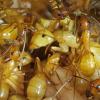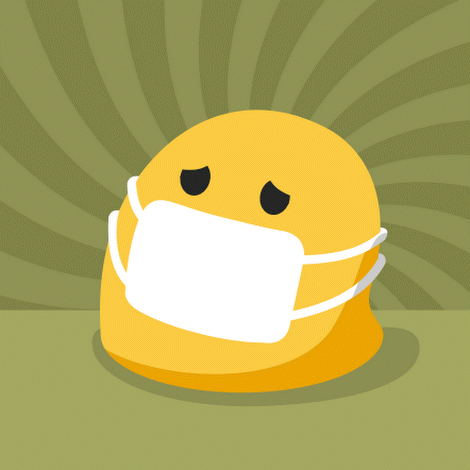- Formiculture.com
- Forums
- Gallery
- Members
- Member Map
- Chat

9 replies to this topic
#1
 Offline
-
Posted August 3 2019 - 11:16 AM
Offline
-
Posted August 3 2019 - 11:16 AM
So I am having trouble identifying these red ants
http://imgur.com/gallery/XY5C9OD
They are a brownish red with a blacker head and bottom half of gaster. Found in northern england (Sunderland) in a overgrown bike path with trees ether side
http://imgur.com/gallery/XY5C9OD
They are a brownish red with a blacker head and bottom half of gaster. Found in northern england (Sunderland) in a overgrown bike path with trees ether side
#2
 Offline
-
Posted August 3 2019 - 11:17 AM
Offline
-
Posted August 3 2019 - 11:17 AM
So I am having trouble identifying these red ants
http://imgur.com/gallery/XY5C9OD
They are a brownish red with a blacker head and bottom half of gaster just under or over 5mm. Found in northern england (Sunderland) in a overgrown bike path with trees ether side
Posted 3rd August 2019
http://imgur.com/gallery/XY5C9OD
They are a brownish red with a blacker head and bottom half of gaster just under or over 5mm. Found in northern england (Sunderland) in a overgrown bike path with trees ether side
Posted 3rd August 2019
Edited by Musicman1701, August 3 2019 - 11:26 AM.
#3
 Offline
-
Posted August 3 2019 - 11:29 AM
Offline
-
Posted August 3 2019 - 11:29 AM
Myrmica sp.
- AntsBC likes this
#4
 Offline
-
Posted August 3 2019 - 11:33 AM
Offline
-
Posted August 3 2019 - 11:33 AM
Void that is what I thort but they do not seem to have the spine that both rubica and ruginodis do any idea?
#5
 Offline
-
Posted August 3 2019 - 12:57 PM
Offline
-
Posted August 3 2019 - 12:57 PM
The reddish ones are a myrmica species, and they are semiclaustral and notoriously hard to raise from one queen. Try combining them. If any aggression is shown, seperate them.
I believe the larger ants are camponotus, but the head shape looks like formica. Both are fully claustral.
Edited by ponerinecat, August 3 2019 - 12:58 PM.
#6
 Offline
-
Posted August 3 2019 - 12:58 PM
Offline
-
Posted August 3 2019 - 12:58 PM
You double posted.
#7
 Offline
-
Posted August 3 2019 - 2:14 PM
Offline
-
Posted August 3 2019 - 2:14 PM
The larger onces are just over cm so guessing formica fuska was the red ones that had me baffled got 3 so shall put them together now I know they can thank you greatly 
and apologise first time using didn't relize I had.
and apologise first time using didn't relize I had.
Edited by Musicman1701, August 3 2019 - 2:16 PM.
#8
 Offline
-
Posted August 5 2019 - 8:25 PM
Offline
-
Posted August 5 2019 - 8:25 PM
Red ones look like Myrmica sp. and the black ones look like Formica fusca of some sort.
#9
 Offline
-
Posted August 8 2019 - 11:53 AM
Offline
-
Posted August 8 2019 - 11:53 AM
myrmica are semi claustral so you must feed them in founding stages
#10
 Offline
-
Posted November 2 2019 - 11:34 PM
Offline
-
Posted November 2 2019 - 11:34 PM
To be specific ant one and two are Myrmica Scabrinodis Nylander, which means that they are semi claustral so indeed have to be feed in the founding stage. And ant three and four are both Lasius Umbratus, great beginner spiecies btw.
Also tagged with one or more of these keywords: identify
Anting →
Ant ID Requests →
Can anyone identify which ant this is?Started by KodexFB , Sep 26 2022 |
|

|
||
Ant Keeping →
General Ant Keeping →
Can anyone identify which ant this is?Started by KodexFB , Sep 26 2022 |
|

|
||
Anting →
Ant ID Requests →
Formica or Myrmecocystus , I have been getting different answers? (Las Vegas,NV)Started by olrakbt , Sep 7 2020 |
|

|
||
Ants & Myrmecology →
General →
Need help identifying ant species!Started by FrankieC96 , May 4 2019 |
|

|
||
Anting →
Ant ID Requests →
Need help defining gender and speciesStarted by Andrewcomtois , Jul 29 2018 |
|

|
1 user(s) are reading this topic
0 members, 1 guests, 0 anonymous users


















